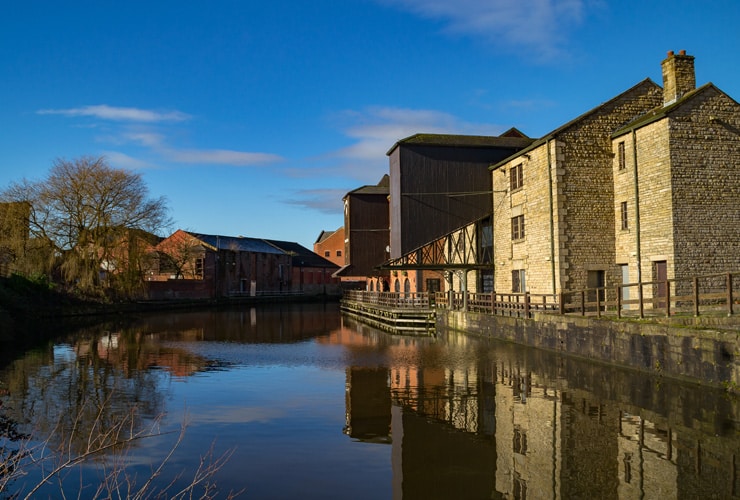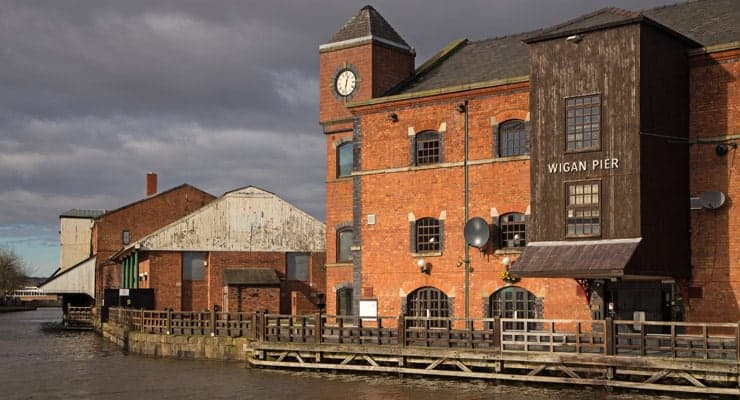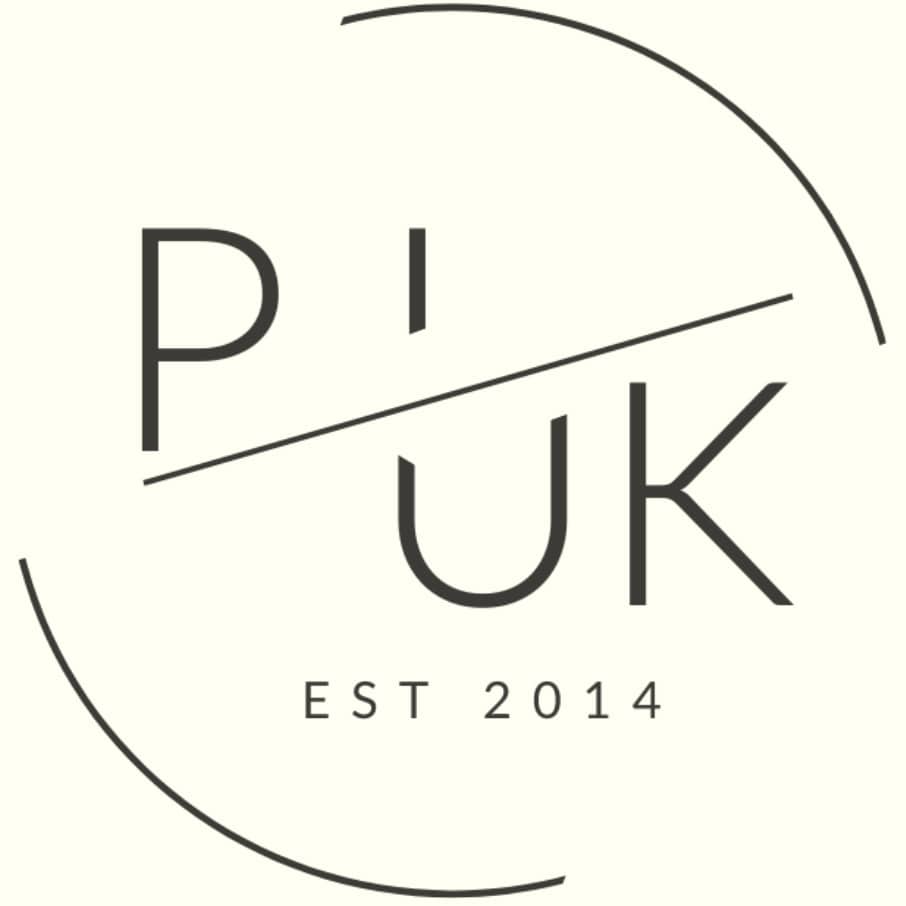Wigan Property Investment: Best Buy-to-Let Areas 2025
Wigan combines its industrial heritage with a modern, growing economy, offering property investors the advantages of Greater Manchester's economic growth at significantly lower entry prices.
So for value and yield-focused investors, Wigan may not be in the list of the cheapest places to buy a house in England, but it is affordable, has strong tenant demand and some of the hallmarks for potential capital growth, making it particularly attractive for those seeking value in the North West's property market.
Data updated: February 2025. Next update: April 2025
Wigan Buy-to-Let Market Overview 2025
Average yields range from 4.2% to 5.4%, with sold property prices spanning £103,258 to £314,142 (33% below UK average). Top performing areas include WN3 (Ashton-in-Makerfield) for both yields (5.4%) and capital growth (45.2% over 5 years). With average weekly rents between £175-£241, equivalent to monthly rents of £758-£1,043.
Contents

-
by Robert Jones, Founder of Property Investments UK
With two decades in UK property, Rob has been investing in buy-to-let since 2005, and uses property data to develop tools for property market analysis.

Property Data Sources
Our location guide relies on diverse, authoritative datasets including:
- HM Land Registry UK House Price Index
- Ministry of Housing, Communities and Local Government
- Ordnance Survey Data Hub
- Propertydata.co.uk
We update our property data quarterly to ensure accuracy. Last update: February 2025. Next update: April 2025. All data is presented as provided by our sources without adjustments or amendments.
Best Areas for Buy-to-Let in Wigan
Highlights
Wigan, strategically located in the west of Greater Manchester, offers a great entry price for homeowners and affordable buy-to-lets, providing a great option for property investors looking at choosing a property sourcing company to help them build a local high-yield portfolio.
Average for sale house prices £
- Premium areas: WA3 (Golborne/Lowton) leads at £299,761, with M29 (Tyldesley) at £274,456
- Value opportunity: WN7 (Leigh) at £190,969 represents the most accessible entry point
Average asking rents and yields
- Highest weekly rent: WA3 (Golborne/Lowton) achieves £241, delivering a 4.2% yield
- Top yield area: WN3 (Ashton-in-Makerfield) leads with 5.4% yield
- Premium yield: M29 (Tyldesley) offers 4.3% due to higher purchase prices
Wigan's property market significantly benefits from Manchester's extensive road and motorway network, yet unfortunately, it is a little further out of the city and therefore it doesn't have the same benefit with the Metrolink that nearby Salford has.
It's proximity to Manchester and housing market has therefore been more similar to buy-to-lets in Bolton and Preston with slower growth than Salford.
What it misses in historic growth compared to areas like Manchester (and even Oldham, Stockport and Cheshire), it more than makes up for in affordability.
WN3 (Ashton-in-Makerfield) emerges as a standout opportunity, combining the highest yields (5.4%) with relatively affordable entry prices. Premium areas like WA3 (Golborne/Lowton) and M29 (Tyldesley) attract families and professionals with their mix of terrace houses, semi-detached and detached homes.
Why Invest in Wigan?
Wigan, with its rich industrial history, is transforming into a modern hub. Conveniently located with Liverpool to the West and Manchester to the East, it's a prime spot for businesses involved in logistics and distribution, and it's got a dynamic economy with major employers investing in to the area like Heinz and AB World Foods.
Wigan's regeneration is gathering momentum, with the town centre getting a £135 million facelift, with new shops, restaurants, a cinema, and over 400 new homes.
Regeneration also extends to Ashton with a £6.6 million development improving business spaces and making the city greener and more appealing to pedestrians and cyclists.
These projects are breathing new life into Wigan, making it a more attractive place to live and work. And with government levelling up initiatives like the £20 million investment in Haigh Hall, the future looks bright for this historic town.
House prices in Wigan are generally seen as affordable, making it appealing for buy-to-let landlords and developers looking to enter the housing market and grow value with developments and strategies like buy-refurbish-refinance rather than awaiting capital growth which has been slower than some competing regions.
Wigan Buy-to-Let Market Analysis 2025
When Was the Last House Price Crash in Wigan?
House price trends vary across property types, with the overall trend for house prices in Wigan increasing since 2020, however, there have been house price crashes locally.
The last significant property price crash in Wigan occurred during the global financial crisis of 2008-2010, which happened after a large growth period of local house prices between 2000 and 2005.
Yet unlike many cities and towns across England, the Wigan house price crash continued for longer and lasted until 2012 before it started to level out.
Between 2012 to 2020, the Wigan real estate market flat-lined with static prices across all property types, apart from detached houses, which did actually start to see growth again, earlier than other property types like local Victorian and Edwardian terraces, from 2015.
Average Sold House Prices in Wigan by Property Types
The latest sold house price index by the land registry, Nov 2024 (it is always a couple of months behind reporting its datasets), shows the following average sold house prices across the Wigan local authority area.
Wigan's property prices demonstrate significant value compared to UK averages, particularly in terms of affordability. All property types in Wigan sit notably below national averages, with detached houses at 28% below UK averages and flats and maisonettes offering particularly accessible entry points at 56% below national averages. This indicates exceptional value opportunities across the local market for homeowners and buy-to-let landlords.
Wigan (local authority area)
Updated February 2025
| Property Type | Wigan Average Price | UK Average | Difference |
|---|---|---|---|
| Detached houses | £314,142 | £436,949 | -28% |
| Semi-detached houses | £196,606 | £283,546 | -31% |
| Terraced houses | £151,588 | £242,598 | -38% |
| Flats and maisonettes | £103,258 | £233,230 | -56% |
| All property types | £194,247 | £289,707 | -33% |
Property Data Sources
Our location guide relies on diverse, authoritative datasets including:
- HM Land Registry UK House Price Index
- Ministry of Housing, Communities and Local Government
- Ordnance Survey Data Hub
- Propertydata.co.uk
We update our property data quarterly to ensure accuracy. Last update: February 2025. Next update: April 2025. All data is presented as provided by our sources without adjustments or amendments.
House Prices in Wigan: For Sale Asking Prices (£)
Updated February 2025
The data represents the average asking prices of properties currently listed for sale in Wigan.
| Rank | Area | Average House Price |
|---|---|---|
| 1 | WA3 (Golborne) | £299,761 |
| 2 | M29 (Tyldesley) | £274,456 |
| 3 | WN6 (Standish) | £226,444 |
| 4 | WN4 (Ashton-in-Makerfield) | £216,368 |
| 5 | M46 (Atherton) | £214,028 |
| 6 | WN5 (Pemberton) | £206,403 |
| 7 | WN1 (Wigan Central) | £204,953 |
| 8 | WN3 (Ince) | £201,997 |
| 9 | WN2 (Hindley) | £200,275 |
| 10 | WN7 (Leigh) | £190,969 |
Wigan's house prices show significant variation across the borough, with Golborne (WA3) commanding the highest at £299,761 and Leigh (WN7) the lowest at £190,969. The more suburban areas generally show higher values, while areas closer to the town center show lower prices. These figures reflect average asking prices across all property types and should be considered alongside factors such as property age, condition, and specific location within each postcode.
Price Per Square Foot in Wigan (£)
Updated February 2025
The data represents a blended average, combining the average asking price per square foot of properties currently for sale in Wigan and the sold price per square foot of sold properties.
| Rank | Area | Price Per Square Foot |
|---|---|---|
| 1 | WA3 (Golborne) | £269 |
| 2 | M29 (Tyldesley) | £258 |
| 3 | WN6 (Standish) | £220 |
| 4 | WN4 (Ashton-in-Makerfield) | £212 |
| 5 | M46 (Atherton) | £205 |
| 6 | WN3 (Ince) | £203 |
| 7 | WN7 (Leigh) | £196 |
| 8 | WN5 (Pemberton) | £195 |
| 9 | WN2 (Hindley) | £194 |
| 10 | WN1 (Wigan Central) | £187 |
Wigan's price per square foot values show variation across the borough, with Golborne (WA3) commanding the highest at £269 and Wigan Central (WN1) the lowest at £187 per square foot. The more suburban areas generally show higher values, while areas closer to the town center show lower prices per square foot. These figures reflect the average across all property types and should be considered alongside factors such as building age, condition, and specific location within each postcode.
House Price Growth in Wigan (%)
Updated February 2025
The data represents the average house price per square foot growth over the past five years, calculated using a blended rolling annual comparison of both sold prices and asking prices. These figures should be interpreted with caution, as they reflect average prices across all property types and include both properties currently for sale and those already sold.
| Rank | Area | 5 Year Growth |
|---|---|---|
| 1 | WN3 (Ince) | 45.20% |
| 2 | WN4 (Ashton-in-Makerfield) | 33.80% |
| 3 | WN5 (Pemberton) | 30.80% |
| 4 | M46 (Atherton) | 26.90% |
| 5 | WN2 (Hindley) | 25.60% |
| 6 | WN1 (Wigan Central) | 23.20% |
| 7 | WA3 (Golborne) | 22.30% |
| 8 | WN7 (Leigh) | 20.10% |
| 9 | M29 (Tyldesley) | 15.90% |
| 10 | WN6 (Standish) | 14.10% |
Wigan's growth figures show notable variation across different areas, with Ince (WN3) leading at 45.20%, followed closely by Ashton-in-Makerfield (WN4) at 33.80% and Pemberton (WN5) at 30.80%. These figures should be viewed with some caution as they represent average prices across all property types and include properties 'for sale' and 'sold prices'. The data suggests particularly strong growth in traditionally more affordable areas, with several postcodes showing growth above 20.00%. Meanwhile, areas like Standish (WN6) and Tyldesley (M29) show more modest but still positive growth rates.
Property Data Sources
Our location guide relies on diverse, authoritative datasets including:
- HM Land Registry UK House Price Index
- Ministry of Housing, Communities and Local Government
- Ordnance Survey Data Hub
- Propertydata.co.uk
We update our property data quarterly to ensure accuracy. Last update: February 2025. Next update: April 2025. All data is presented as provided by our sources without adjustments or amendments.
Wigan Buy-to-Let Rental Market Analysis
For those buying their first rental property, and thinking how much can you charge for rent in Wigan?
The rental data below gives an indication on the rental income per month and the rental yields landlords can aim to achieve for traditional assured shorthold tenants. This is helpful if you are growing a buy-to-let business in the Wigan area.
Rental Prices in Wigan (£)
Updated February 2025
The data represents the average monthly rent for long-let AST properties in Wigan. These figures reflect rents across all property types and do not account for differences in property size, number of bedrooms, or short-term lets.
| Rank | Area | Average Weekly Rent | Average Monthly Rent |
|---|---|---|---|
| 1 | WA3 (Golborne) | £240 | £1,040 |
| 2 | M29 (Tyldesley) | £228 | £988 |
| 3 | WN6 (Standish) | £212 | £920 |
| 4 | WN4 (Ashton-in-Makerfield) | £206 | £892 |
| 5 | M46 (Atherton) | £214 | £926 |
| 6 | WN5 (Pemberton) | £194 | £842 |
| 7 | WN1 (Wigan Central) | £175 | £758 |
| 8 | WN3 (Ince) | £208 | £900 |
| 9 | WN2 (Hindley) | £185 | £800 |
| 10 | WN7 (Leigh) | £195 | £845 |
Wigan's rental market shows variation across different areas, with Golborne (WA3) and Tyldesley (M29) achieving the highest average weekly rents at £240 and £228 respectively. The suburban areas with housing stock including larger properties such as detached and semi-detached houses generally command higher rents, while the central areas show lower average rents. Remember these figures represent average rents across all property types, from studio apartments to larger houses, and actual achievable rents can vary significantly based on property size, condition, and specific location.
Gross Rental Yields in Wigan (%)
Updated February 2025
The data represents the average gross rental yield in Wigan, calculated using a snapshot of current properties for sale and properties for rent. These figures are based on asking prices.
| Rank | Area | Gross Rental Yield |
|---|---|---|
| 1 | WN3 (Ince) | 5.40% |
| 2 | WN4 (Ashton-in-Makerfield) | 5.00% |
| 3 | WN1 (Wigan Central) | 4.40% |
| 4 | WN5 (Pemberton) | 4.90% |
| 5 | WN2 (Hindley) | 4.80% |
| 6 | WN7 (Leigh) | 5.30% |
| 7 | WN6 (Standish) | 4.90% |
| 8 | WA3 (Golborne) | 4.20% |
| 9 | M29 (Tyldesley) | 4.30% |
| 10 | M46 (Atherton) | 5.20% |
Wigan's rental yields show notable variation across different postcodes, with Ince (WN3) offering the highest yield at 5.40%, followed by Leigh (WN7) at 5.30% and Atherton (M46) at 5.20%. These areas typically have lower property prices combined with steady rental demand. These figures represent gross rental yields calculated from average rents and prices, and investors should note that net yields will be lower after accounting for costs, void periods, and management expenses.

Access our selection of exclusive, high-yielding, off-market property deals and a personal consultant to guide you through your options.
Is Wigan Rent High?
Rent in Wigan can generally be seen as affordable but each postcode is different, with some more affluent areas pushing affordability to its limits for local residents.
Based on ONS data showing North West median weekly household income at £696 (£36,192 annually), Wigan's rental costs for many postcodes comfortably fit in the range of affordable.
In WA3 (Golborne/Lowton), which has Wigan's highest weekly rents at £241 (£1,043 monthly), residents need to commit 34.60% of their gross income to rent. The situation is similar in M29 (Tyldesley), where weekly rents of £228 (£988 monthly) would require 32.70% of the median household income.
In more affordable areas like WN1 (Wigan Central), where weekly rents average £175 (£758 monthly), residents commit 25.10% of median household income to rent. Popular areas like WN6 (Standish) show consistently high rental rates at £212 per week (£917 monthly), requiring around 30.40% of median gross household income.
Wigan's rental prices sit way below neighbouring Manchester's levels. With most areas requiring between 25-35% of median gross household income for rent (before tax, utilities, and other living expenses), Wigan provides an affordable option for tenants.
Are Wigan House Prices High?
Wigan's property market provides a much more affordable alternative to the wider UK market, according to the latest sold house price data from HM Land Registry House Price Index.
Wigan's average sold house price stands at £194,247, which sits significantly 33% below the UK average of £289,707.
This price point makes it an accessible market for those starting their investment journey, whether they're beginning with their first home or exploring property investment training.
With similar patterns evident across all property categories - detached homes at £314,142 (28% below UK), semi-detached at £196,606 (31% below), terraced houses at £151,588 (38% below), and flats at £103,258 (56% below national average).
The lower entry prices for real estate in Wigan compared to other major North West cities and towns within commuting distance of Manchester, like Warrington and Preston, have sparked increased interest in Wigan's more affordable postcodes.
How Much Deposit to Buy a House in Wigan?
So how much do you need to earn to buy a house in Wigan? Assuming a 30% deposit for the average buy-to-let investor, here's an overview of deposit requirements across different Wigan regions:
North Wigan
- WN2 (Wigan North): A buy-to-let investor looking at an average property (£200,275) would need to put down a 30% deposit of £60,082.
- WN6 (Standish): In Standish, an investor would need a 30% deposit of £67,933 for an average property (£226,444).
South Wigan
- WN4 (Ashton-in-Makerfield): A buy-to-let investor would need a 30% deposit of £64,910 for an average property (£216,368).
- WN3 (Ince): In WN3, an investor would need a 30% deposit of £60,599 for an average property (£201,997).
Central & East Wigan
- WN1 (Wigan Central): A buy-to-let investor would need a 30% deposit of £61,486 for an average property (£204,953).
- WN5 (Pemberton): An investor would require a 30% deposit of £61,921 for an average property (£206,403).
- WN7 (Leigh): For an average property in Leigh (£190,969), a deposit of £57,291 would be needed.
Surrounding Areas
- WA3 (Golborne/Lowton): An investor would need a 30% deposit of £89,928 for an average property (£299,761).
- M29 (Tyldesley): A deposit of £82,337 would be needed for an average property (£274,456).
- M46 (Atherton): An investment here requires a 30% deposit of £64,208 for an average property (£214,028).
For those considering their first Wigan buy-to-let investment, areas like WN3 and WN7 offer an excellent balance of affordable entry prices and solid yields, with WN3 achieving the highest yield at 5.40% and WN7 following closely at 5.30%.
Wigan Population Growth
The total population of Wigan was 329,300 (as of the last UK government census in 2021).
Wigan's population has grown by 3.6%, increasing from 317,800 in 2011.
This growth rate is quiet slow and in part explains some of the slower growth in the Wigan housing market.
It was lower than the overall population increase across the North West region (5.2%) and was also below England's overall growth (6.6%).
The average (median) age in Wigan increased by one year to 41 years between the two censuses. This indicates a slightly older demographic profile compared to both the North West region and England overall, which both had median ages of 40 years.
Notable age-related changes in Wigan's population between 2011 and 2021 include:
- The number of residents aged 50-64 years increased by approximately 7,700 people (a 12.7% rise)
- The 35-49 age group decreased by around 9,100 people (12.6% reduction)
- The proportion of residents aged 50-64 grew by 1.7 percentage points, now representing 20.6% of the population
Population density in Wigan has also increased, with the area now home to approximately 12.5 people per football pitch-sized piece of land, compared with 12.1 in 2011. This places Wigan among the top 35% most densely populated English local authority areas.
Below we look at the largest postcode districts by population across Wigan and the population growth for each.
Population Growth in Wigan by Postcode District
Population and growth rates by area (2021 Census data)
| Rank | Area | Population at 2021 Census | Population Growth 2011 to 2021 |
|---|---|---|---|
| 1 | WN2 | 52,661 | 5% |
| 2 | WN7 | 47,819 | 5% |
| 3 | WA3 | 47,603 | 5% |
| 4 | WN5 | 43,844 | 5% |
| 5 | WN6 | 39,725 | 5% |
| 6 | WN3 | 30,089 | N/A |
| 7 | WN4 | 28,794 | 5% |
| 8 | M29 | 22,788 | 5% |
| 9 | M46 | 22,298 | 5% |
| 10 | WN1 | 19,681 | 5% |
The population data highlights consistent growth across Wigan's postal districts, with most areas experiencing a 5% increase over the past decade. WN2 and WN7 are the most populous districts, housing over 50,000 and 47,000 residents respectively. The distribution pattern indicates suburban districts with larger populations compared to more central areas. Even the smaller districts like WN1, with 19,681 residents, show steady growth, reflecting stable development trends throughout the borough. Note: While the postcode district data totals 328,302 residents, Wigan's total population is 329,300. This difference occurs because some postcode districts cross local authority boundaries and are not included in the district-level breakdown.

Wigan Landlord Licensing
Buy-to-Let Licensing
For Wigan buy-to-let landlords with traditional individual or family tenants, there is currently no mandatory, selective, or additional landlord licensing scheme in place across Wigan Borough.
Houses of Multiple Occupation Licensing
Landlords who want to invest in a HMO (house in multiple occupation) in Wigan are likely to need a mandatory licence. This is currently a requirement for all HMOs with:
- 5 or more people
- From 2 or more households
- Sharing facilities (such as bathrooms or kitchens)
Current Wigan HMO Licensing Fees:
- New Application: £778
- Renewal Application: £502
- Additional Fee for properties with over 10 occupiers: £31
- Additional Fee for properties with over 20 occupiers: £60
Licenses are valid for 5 years from the date of issue. Wigan council HMO requirements can be found here.
Wigan Article 4 Directions
Wigan has some Article 4 directions in place across 2 main areas, which means you need planning permission to change a house from a traditional buy-to-let home (classed as a C3 dwelling house) to a HMO (classed as a C4 house in multiple occupation).
These include
Wigan council also have a supplementary housing document for HMOs and planning here.

How to Invest in Buy-to-Let in Wigan
For properties to buy in Wigan including:
- Finding off-market properties
- Buy-to-lets
- Buying a Holiday let or Serviced accommodation
- HMOs (houses of multiple occupation)
- PBSA (purpose-built student accommodation)
- and other high-yielding opportunities
We have partnered with the best property investment agents we can find for 8+ years.
Here you can get access to the latest investment property opportunities from our network.
For more information about specific areas:
- If you're interested in the highest returns, consider WN3, WN4, WN7 and M46 with yields of over 5%
- For alternative options in the North West with affordable entry prices, check out our guide to the cheapest areas to live in Manchester
- For different opportunities with low prices and high yields, consider exploring buy-to-let in Blackpool or buy-to-let in St Helens.
